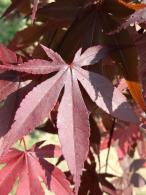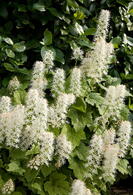Stewartia Pseudocamellia
1. Add items to basket
2. Go to the basket
3. Enter your postcode in Delivery Price Check
Plant shape: Bush
Pot size: 20 Litres
Plant ID: 10444 2
View plant size:Pot size: 110 Litres
Plant ID: 6517 W 42
View plant size:LIMITED STOCK only 2 available
- then no more stock of this size
Plant shape: Multi-stemmed
Pot size: 110 Litres
Plant ID: 14842 W 42
View plant size:LIMITED STOCK only 2 available
- then no more stock of this size
To check delivery cost add your plants to basket, then you can type your postcode in our Quick Delivery Price Check.

Stewartia Pseudocamellia has many names including the Japanese Camellia, Deciduous Camellia and Japanese Stewartia. This is an attractive, deciduous, ornamental shrub or tree. Left to its own devices, it has a naturally rounded habit and grows slowly into a small, multi-stem deciduous tree. It owes its name – Pseudocamellia – to its showy white flowers. These camellia-like flowers are up to 8 cm wide, with five white petals with orange anthers at the centre. The flowers are round and flat and are produced in summer, generally from June right up until the end of August.
Stewartia Pseudocamellia has highly decorative foliage. Emerging new foliage each spring is purple, maturing over the summer to rich green and then finally to fiery red or orange (depending on conditions) in autumn before dropping its leaves.
The Deciduous Camellia has quite a striking bark that peels to display a mottled mixture of creams and browns, rather resembling marble. This is best observed during the winter months and early spring.
The Japanese Camellia is very hardy if it is kept out of drying winds. It has survived winters as cold as -30 °C.
Deciduous Camellia performs best if it is sheltered as the blooms and foliage can be damaged by cold drying winds. A sheltered partially shady spot is ideal although an aspect with morning sun will also work.
Stewartia Pseudocamellia likes a well-drained but moist acidic to neutral soil. There is no need to prune as it holds its own attractive natural shape unless you want a specific shrub shape. Mulch around the base in early spring and water young trees in hot weather.
Young Japanese Camellia shrubs especially will need watering, but once they are established become tough even in freezing temperatures. It will grow to a maximum height of 12 metres and spread over eight, making it a large shrub or smaller variety of tree suited to compact gardens.
The Japanese Camellia is best used as a statement shrub or small ornamental tree. It has many noteworthy attributes including its eye-catching foliage colour from spring right through to autumn, showy white flowers in mid-summer and in winter months its flaking bark is an attractive textural addition.
Stewartia Pseudocamellia has received the Award of Garden Merit by the Royal Horticultural Society, a sure sign that it will perform well in most gardens.



















